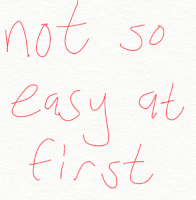Caveats:
Before I get into the details of the free Belbin Test: all my favourite coaching tools - free, online, or other - need to be applied with sensible and cautionary advice from statistician George EP Box: "all models are wrong, some are useful". I discuss this principle with individual coachees, teams and team leaders this before giving them homework or some brief presentation on Belbin's Team Role theory.I also explain about the problems of labels, and how labels applied to people become truthes that get played out. (see Stephen R. Covey's The 7 Habits of Highly Effective People (UK) (or US)
There are a number of ways to apply the Belbin Team Roles theory, which all provide shades of correctness. All applications provide valuable team member role insights and can be quite usefully combined with team building activities or coachee plan assignments.
The easiest, and only sanctioned way to apply the Belbin Team Roles Test, is to go online to http://www.belbin.com and purchase the required number of tests for you and your team. The online Belbin test reports are generated and emailed to you. The assessments are fantastically detailed and provide plenty of material to help a team improve and to give team members insights into themselves as people and members of "this" team they are currently members of. I recommend this approach for excellent results!
There is an alternative free Belbin Test that also works albeit unsupported and to a lesser scientific and correct level:
Step 1: Read everything you can on Meredith Belbin, the history of the team role theory, the opposition, and the advocates.
Step 2: Especially make sure to read and understand the Belbin Team Roles
- http://www.belbin.com/content/page/49/BELBIN(uk)-2011-TeamRoleSummaryDescriptions.pdf
- http://en.wikipedia.org/wiki/Team_Role_Inventories
- http://www.mindtools.com/pages/article/newLDR_83.htm
Step 3: Have your coachee read the above links as well. Or in a team context, I discuss the roles (Plant, Resource Investigator, Monitor Evaluator, Co-ordinator, Shaper, Teamworker, Implementer, Completer Finisher, Specialist) and many of the points from the 3 above links with the team.
Step 4: Now have the coachee or the team members self-select the order of the 9 Belbin roles as they see themselves. Not really surprisingly, people know from previous feedback over the years of their lives if they are extroverted or introverted; if they prefer analysing new problems or finishing off final details of things; if they like to delegate or prefer to receive direction; etc, etc)
 |
| Belbin Team Roles Are Preferences Dependent On Dynamics And Context |
Step 5 (for teams): Have the team members then rate each of the other members' top 3 Belbin roles as they see them. Again, not really surprising, team members also know how their colleagues are and usually can educated-guess-place them in appropriate Belbin Team Roles - once they know what those roles are!
Each team member can now combine and collate the results for themselves.
Step 6: Evaluate with the coachee/every team member how much resonance they feel with the top 3 roles others have placed them into. Is there a match between self perception and team member perception? If not, how much difference on a scale of 1-10? In what ways can the coachee think to close the gap or to make their own self perception the reality? Perhaps more feedback should be collected and then a re-evaluation. Every situation is different and it is helpful to have loads more coaching and coaching tools available if and when required!
Step 7 (optional): If at this stage the coachee or team really wants to evaluate still further, an online free Belbin test is at: http://www.123test.com/team-roles-test/. It has fewer and less detailed questions than the actual Belbin test and I can't attest to the correctness of its results at the time of writing this.
Jo Keeler, from the Belbin Institute as posted in the comments below, clearly indicates this "free Belbin test" is an unsanctioned Belbin test (and therefore probably should be called something else!).
The Belbin Team Role is a very useful and powerful self-perception/awareness tool that is easy to grasp by those with less time or psychology foundation. In some respects it is not important that it is 100% accurate at this stage as it could be an illumination and/or reflection of how/who the person actually wants to be. Other feedback from the workplace, or from experiential team building, or training events will make the picture clearer for each individual and the team as a whole - leading towards a high performance team.
With more self-awareness of natural team role(s) placement, and the ability to sensibly apply the Belbin model to self and colleagues, opens up possibilities to understand more about the workplace and give insights into what possible steps to take to change it/oneself as required.
For the coachee, this view can be used as input to their coaching plan, to set some goals to acquire new skills and behaviours (eg a natural Plant who's ambition is to become a Co-ordinator) or wishes to improve their team's effectiveness (eg evaluating for a missing or under-represented role).
For the team or the team leader, balancing of Belbin team roles is key. Too many of 1 role or a total lack of a role, causes the team to behave/perform in sub-optimal ways. Awareness of the team roles and the Belbin theory is useful to encourage people to acquire new behaviours if they're interested, to set SMART Goals to encourage different outcomes, and even to help influence the next recruitment opportunity.
Thank you!




![Merrill Covey Matrix (By Rorybowman (Own work) [Public domain], via Wikimedia Commons) Covey Matrix](https://upload.wikimedia.org/wikipedia/commons/3/32/MerrillCoveyMatrix.png)
